Quasar Host Galaxies
Click on image for full size
Hubble Space Telescope image courtesy of STScI
Quasi Stellar Objects: Quasars and Active Galaxies
Quasars, or quasi stellar objects, are so named because they are point-like objects just like stars. However, they are nothing like stars when they are analyzed. From spectroscopic analysis they are determined to be very distant, some are the most distant objects that we can see. But they are also very bright. Such intensity seen by Earth at such great distances indicates immensely high luminosity. What could they be? For many years Astronomers were baffled.
It has now been determined that Quasars are most likely the centers of Active Galaxies. In the center of many galaxies there may rest supermassive Black Holes. Around these Black Holes gigantic discs of matter falling onto them form. This matter is heated to unimaginably high temperatures and hence shines so bright that some Active Galactic Nuclei outshine their host galaxies.
In addition to the discs of infalling matter the Black Holes also form jets of matter that shoot out from the center of the galaxy. These jets can shoot out for Millions of Light-Years.
In this view quasars are special Active Galactic Nuclei that have their jets lined up with our line of sight. So we are looking straight down the jet and it seems extraordinarily bright.
You might also be interested in:
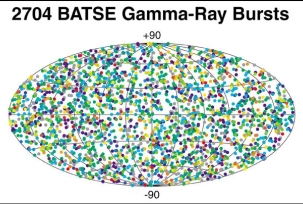
In the 1960's, the United States launched a series of satellites to look for very high energy photons, called Gamma Rays, that are produced whenever a nuclear bomb explodes. These satellites soon detected
...more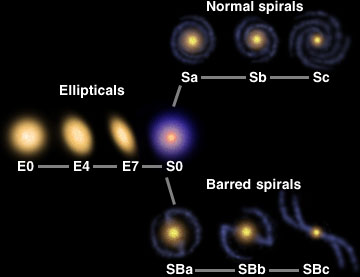
The introduction of telescopes to the study of astronomy opened up the universe, but it took some time for astronomers to realize how vast the universe could be. Telescopes revealed that our night sky
...more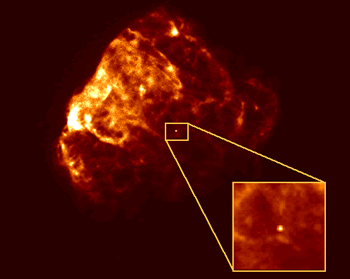
Neutron Stars are the end point of a massive star's life. When a really massive star runs out of nuclear fuel in its core the core begins to collapse under gravity. When the core collapses the entire star
...more
Spiral galaxies may remind you of pinwheels turning slowly as though in some intergalactic breeze. They are rotating disks of gas, dust and stars. Through a telescope or binoculars, the bright nucleus
...more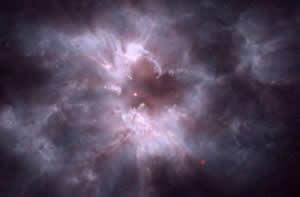
White Dwarfs are the remnants of stars that were massive enough to stay alive using nuclear fusion in their cores, but not massive enough to blow apart in a Type II supernova. When stars like our own sun
...more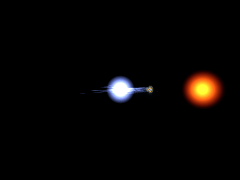
What's in a Name: Arabic for "head of the demon" Claim to Fame: Represents Medusa's eye in Perseus. A special variable star that "winks" every 3 days. Type of Star: Blue-white Main Sequence Star, and
...more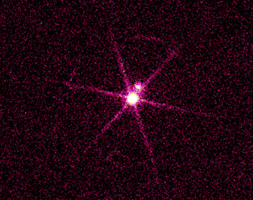
What's in a Name: Nicknamed the "Pup" because it is the companion to Sirius, "the Dog Star" Claim to Fame: Highly compressed white dwarf remnant. Density about 50,000 times that of water. It has approximately
...more















